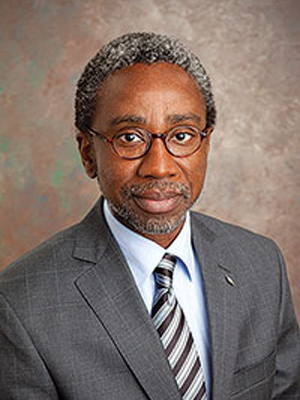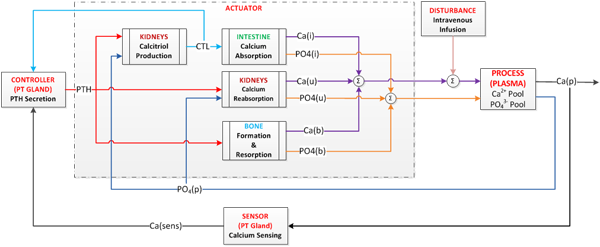 |
Babatunde A. Ogunnaike
Dean of College of Engineering
William L. Friend Chair of Chemical Engineering
Professor, Center for Systems Biology - DBI
Chemical and Biomolecular Engineering
University of Delaware
Babatunde A. Ogunnaike is the William L. Friend Chaired Professor of chemical engineering and Dean of the College of Engineering at the University of Delaware. He received the B.Sc. degree in Chemical Engineering from the University of Lagos, Nigeria; the M.S. degree, in Statistics and the Ph.D. degree in Chemical Engineering both from the University of Wisconsin–Madison. He is the author or co-author of four books including a widely used textbook, Process Dynamics, Modeling and Control, and Random Phenomena: Fundamentals of Probability and Statistics for Engineers. His awards include the American Institute of Chemical Engineers 1998 CAST Computing Practice Award, the 2007 ISA Eckman Award, and the 2008 AACC Control Engineering Practice award. He was named a fellow of the American Institute of Chemical Engineers in 2009, a fellow of the American Association for the Advancement of Science in 2015; he was also elected to fellowship of the Nigerian Academy of Engineering and elected to the US National Academy of Engineering both in 2012.
Tuesday, May 3, 2016
Refreshments served at 3:30 p.m. Engineering Hall Lobby
Lecture 4:00 p.m.
1610 Engineering Hall
"Biological Control Systems: Systems Biology of Diseases and the Design of Effective Treatments"
The mammalian organism maintains stable, efficient and "near-optimal" performance and homeostasis in the face of external and internal perturbations via distinct biological systems ranging from the large-scale physiological (nervous, endocrine, immune, circulatory, respiratory, etc.), to the cellular (growth and proliferation regulation, DNA damage repair, etc.), and the sub-cellular (gene expression, protein synthesis, metabolite regulation, etc). "Biological Control Systems," a sub-topic of Control Theory, arises from a control engineering perspective of the function, organization, and coordination of these multi-scale biological systems and the control mechanisms that enable them to carry out their functions effectively.
In this presentation, we will provide an overview of how physiological life is made possible by control, and demonstrate the usefulness of a control engineering perspective of pathologies for diagnosis, design, and implementation of effective treatments. The concepts and principles will be illustrated using three specific examples with significant research and clinical implications: Ca++ Regulation (see Fig 1); TGF-ß and prostate cancer; and Platelet Deficiency Control.

Fig 1: The Calcium Regulation Control System
Wednesday, May 4, 2016
Reception at 3:30 p.m. Engineering Hall Lobby
Lecture 4:00 p.m.
1610 Engineering Hall
"OPTIMIZING IN-VITRO FERTILIZATION TREATMENT A Pedagogical Case Study in Random Phenomena Analysis with Social Implications"
Engineering practice has always required involvement in the acquisition, analysis, interpretation and exploitation of data in one form or another, so that the "well-educated" engineer ought to be truly conversant with how to handle data. This is even more so today, with many engineers now working in non-traditional areas ranging from molecular biology to finance, and the problems to be solved continuing to widen in scope and becoming more interdisciplinary. While most engineers are traditionally well-trained in problem formulation and problem solving when all the entities involved are considered deterministic in character, many remain uncomfortable with problems involving random variations, if such problems cannot be idealized and reduced to the more familiar "deterministic" types. Ironically, while students of generations gone by were trained in basic data analysis, most of today's students are not. And for the very few that receive any form of training in probability and statistics, most tend to perceive such training more as a set of instructions on what to do and how to do it, than as a training in fundamental principles of random phenomena.
At the University of Delaware, the course in "Random Phenomena" is taught by presenting basic fundamental principles, methods, and tools for formulating and solving engineering problems that involve randomly varying phenomena. The premise is that by emphasizing fundamentals and basic principles, and then illustrating these with examples, the student will be better equipped to deal with a range of problems wider than that explicitly covered in class. In this presentation, we discuss a particular case study that is used in this class as a pedagogical tool to illustrate how to solve complex, real-life problems involving randomly varying phenomena. It demonstrates how the mathematics of probability, probability models, statistical data analysis, model validation, and mathematical optimization can be used effectively to answer a central question in in-vitro fertilization (IVF) treatment: how many embryos should be implanted to maximize the chances of success while simultaneously minimizing the chances of multiple births?
